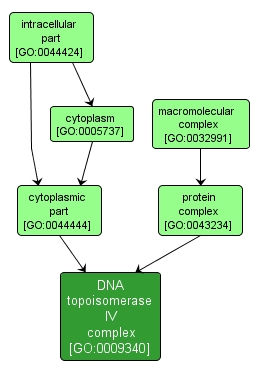GO TERM SUMMARY
|
| Name: |
DNA topoisomerase IV complex |
| Acc: |
GO:0009340 |
| Aspect: |
Cellular Component |
| Desc: |
A heterodimeric enzyme, which in most bacterial species is composed of two subunits, ParC and ParE. Functions in chromosome segregation and can relax supercoiled DNA. |
|

|
INTERACTIVE GO GRAPH
|














